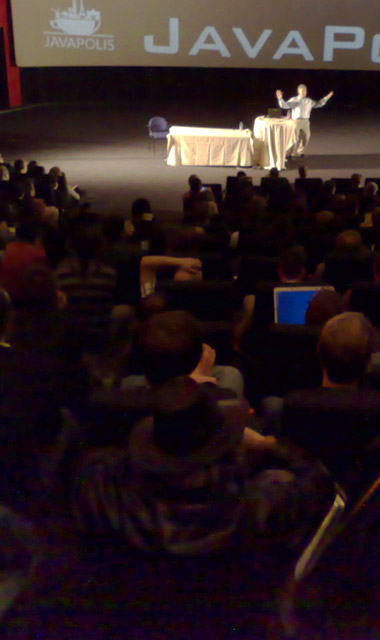Devoxx 2008 Takes Off With Flying Rectangles
This year’s JavaPolis (no, someone thought, “we have a great name for our conference but we have to change it, so let’s choose the worst name we can come up with,” and renamed it to Devoxx) for me started off with a university session on JavaFX. I was hoping to get an introductory overview–and that’s what the speakers did give us, just not in a very structured presentation. We dove right into the JavaFX scripting language: this is what a string looks like, this is our home-grown syntax for arrays, etc. Why develop an entirely new language? I get the usefulness of declaratively programming the layout attributes of components, but the language surrounding that might just as well have been JavaScript, Ruby, Groovy or whatever. The rest of the session covered an assortment of concepts of the JavaFX model, interspersed with live-coded simple demos. “It’s this easy to have a yellow rectangle fly from left to right and let it bounce back a little.” “Oh, and here’s a ready-made application [lots of loc scroll by] to display 9 photos in a window with rounded corners.”
The integration with Illustrator certainly did look handy. Named layers in Illustrator art work become objects you can refer to in the generated JavaFX code. I remember Adobe announcing Photoshop/Flex integration almost a year ago–is it there yet? This could seriously save lots of the tedious work converting graphic designs into application resources right now.
One thing that became clear to me: JavaFX 1.0 as it was presented today is not ready to build serious enterprisey applications. Yes you can have flying, rotating and fading rectangles. You can display photos from Flickr in those rectangles. You can even embed a media player to display a movie trailer. But almost all components still have to be developed for JavaFX (or rather, reused from Swing). We’re a long way before JavaFX will be a serious competitor to Flex.
2008-12-08. One response.

